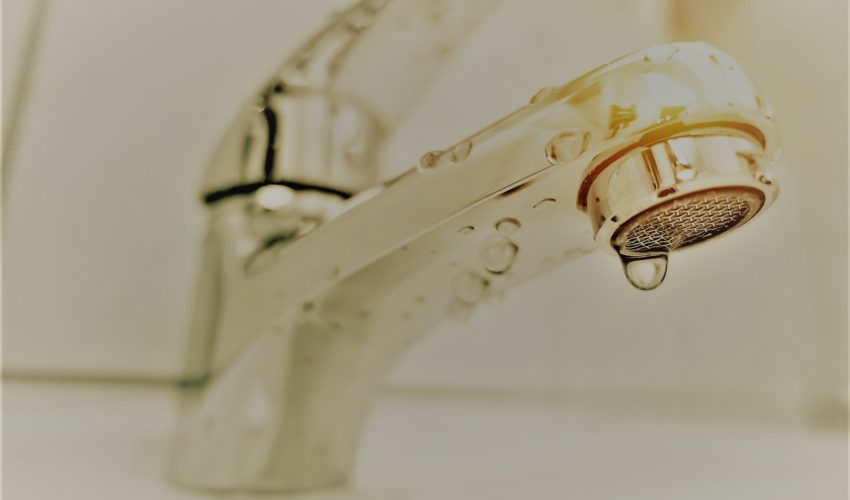Rapid Steps for Solving Low Water Pressure in Your Home
Rapid Steps for Solving Low Water Pressure in Your Home
Blog Article
This article further down pertaining to 4 Ways to Troubleshoot Low Water Pressure is amazingly motivating. Give it a try and draw your own conclusions.

Low water pressure in your home can be a frustrating problem, influencing everything from showering to washing dishes. If you're experiencing weak water flow, there are a number of possible reasons and options to discover. In this guide, we'll talk about common reasons for low tide pressure and useful actions to address the concern effectively.
Intro to Low Water Stress
Low water pressure happens when the circulation of water from your faucets, showers, and other components is weak than normal. This can make day-to-day tasks more difficult and less effective. Comprehending the reasons for low water stress is critical to finding the appropriate solution.
Common Causes of Low Tide Stress
Pipeline Obstructions
Over time, pipes can become blocked with natural resource, sediment, or particles, limiting the flow of water. This is a typical issue in older homes with galvanized steel pipelines.
Deterioration
Deterioration within pipes can result in leakages and decreased water stress. Rust buildup can restrict water circulation, especially in maturing plumbing systems.
Faulty Stress Regulatory Authorities
Stress regulators are responsible for keeping consistent water pressure in your house. If they malfunction, it can result in low water pressure or uneven flow throughout your home.
Community Water Supply Issues
Often, the issue exists outside your home. Metropolitan water supply problems, such as main line leakages or upkeep work, can temporarily decrease water pressure in your area.
How to Identify Low Water Stress
Checking Taps and Fixtures
Begin by evaluating the water pressure at different taps and fixtures throughout your home. If the issue is isolated to certain locations, it may indicate local troubles.
Examining Pipelines
Examine noticeable pipes for indicators of leaks, rust, or clogs. Take notice of any unusual audios, such as knocking or rattling pipes, which could suggest concerns within the plumbing system.
Consulting with a Plumber
If you're incapable to pinpoint the source of low tide stress, take into consideration hiring an expert plumber to carry out a comprehensive examination. They can determine underlying problems and suggest ideal services.
Do It Yourself Solutions to Take Care Of Low Water Pressure
Cleaning Up Aerators and Showerheads
Natural resources can collect in aerators and showerheads, minimizing water flow. Eliminate and clean these parts consistently to enhance water stress.
Flushing Hot Water Heater
Debris build-up in the hot water heater can limit circulation and lower efficiency. Purging the tank regularly assists get rid of debris and preserve optimum performance.
Inspecting Pressure Regulatory Authority
Ensure that the stress regulatory authority is operating appropriately. Changing or replacing the regulatory authority can help restore appropriate water stress throughout your home.
Cleaning Clogs in Pipeline
For small blockages, attempt using a plumbing serpent or chemical drainpipe cleaner to clear obstructions in pipes. Be cautious when utilizing chemicals and follow safety guidelines.
When to Call an Expert Plumber
If DIY initiatives fail to solve the concern or if you think substantial plumbing problems, it's finest to seek support from a certified plumber. They have the know-how and tools to attend to complicated issues safely and efficiently.
Preventive Measures to Maintain Water Pressure
Regular Upkeep
Schedule regular maintenance for your plumbing system to stop problems such as corrosion, leakages, and clogs. Addressing minor troubles early can help avoid even more substantial repair services later on.
Mounting a Pressure Booster
Think about mounting a stress booster pump to enhance water pressure in areas with continually reduced circulation. This can be particularly helpful for multi-story homes or homes with high-demand fixtures.
Monitoring Water Use
Bear in mind water usage routines and stay clear of ill-using the plumbing system. Basic changes, such as shocking showers and laundry loads, can help keep sufficient water stress.
Verdict
Managing low tide stress can be discouraging, however identifying the underlying reasons and applying proper services can recover optimal circulation throughout your home. Whether it's cleaning aerators, evaluating pipes, or speaking with a plumber, taking aggressive actions can guarantee a constant supply of water for your everyday requirements.
FOUR WAYS TO FIX LOW WATER PRESSURE NOW
Turning on a shower or faucet only to find the water comes out in a sad, slow drizzle is never a good feeling. How exactly are you supposed to wash a pan or take a quick shower when it takes 10 minutes just to rinse off a little soap? The good news is that when your water pressure is bad, there's always a cause: typically one that can be easily fixed. Here are some of the most common causes of low pressure and what you can do to fix the issue:
DEBRIS AND MINERAL DEPOSIT BUILDUPS
If you notice low water pressure from just one or two of the fixtures in your house, the problem likely has to do with debris buildup. Water is full of minerals and other debris, all of which can accumulate in your pipes and on your fixtures. This can cause a blockage that affects how much water flows through. To fix this, try filling a small plastic bag with white vinegar, and use a rubber band to hang it around your showerhead or faucet. Let the head of the fixture soak for a few hours, and the vinegar should loosen the deposits.
WATER LEAKS
Leaks are another common cause of low water pressure. If water is flowing out of your plumbing through a hole or crack before it can reach your fixture, the pressure coming out of the faucet or showerhead will be lower. A plumbing professional is your best bet for finding and repairing a leak in your water supply pipes.
Leaks are another common cause of low water pressure. If water is flowing out of your plumbing through a hole or crack before it can reach your fixture, the pressure coming out of the faucet or showerhead will be lower. A plumbing professional is your best bet for finding and repairing a leak in your water supply pipes.
FOUR WAYS TO FIX LOW WATER PRESSURE NOW
Turning on a shower or faucet only to find the water comes out in a sad, slow drizzle is never a good feeling. How exactly are you supposed to wash a pan or take a quick shower when it takes 10 minutes just to rinse off a little soap? The good news is that when your water pressure is bad, there's always a cause: typically one that can be easily fixed. Here are some of the most common causes of low pressure and what you can do to fix the issue:
DEBRIS AND MINERAL DEPOSIT BUILDUPS
If you notice low water pressure from just one or two of the fixtures in your house, the problem likely has to do with debris buildup. Water is full of minerals and other debris, all of which can accumulate in your pipes and on your fixtures. This can cause a blockage that affects how much water flows through. To fix this, try filling a small plastic bag with white vinegar, and use a rubber band to hang it around your showerhead or faucet. Let the head of the fixture soak for a few hours, and the vinegar should loosen the deposits.
WATER LEAKS
Leaks are another common cause of low water pressure. If water is flowing out of your plumbing through a hole or crack before it can reach your fixture, the pressure coming out of the faucet or showerhead will be lower. A plumbing professional is your best bet for finding and repairing a leak in your water supply pipes.
Leaks are another common cause of low water pressure. If water is flowing out of your plumbing through a hole or crack before it can reach your fixture, the pressure coming out of the faucet or showerhead will be lower. A plumbing professional is your best bet for finding and repairing a leak in your water supply pipes.
A VALVE ISSUE
If you have low water pressure throughout your home, check your main shut-off valve to make sure it's completely open. You may also want to see if there's a pressure-reducing valve installed. If there is, have a plumber help you adjust the settings to get the pressure you're looking for.
OTHERS USING WATER
Believe it or not, your low water pressure could be caused by your neighbors. If you notice low pressure at certain times of day, it may be because you and the people living next to you have similar schedules - when everyone is showering at the same time, the pressure will be lower in every home. Low pressure throughout the neighborhood may also be caused by an issue with your municipal water supply. If that's the case, call the supplier to see if they're working on the issue.
https://www.rotorooter.com/blog/water-leaking/low-water-pressure-fixes/

We were made aware of that report about 9 Reasons for Low Water Pressure in Your House from a pal on another blog. Loved our blog entry? Please share it. Help others find it. Bless you for being here. Return soon.
Call Today Report this page